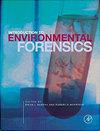尼日利亚西南部奥贡州Ijebu-Ode废物倾倒场中天然存在的放射性同位素和重金属的污染源识别、健康和放射风险评估
IF 1.2
4区 环境科学与生态学
Q4 ENVIRONMENTAL SCIENCES
引用次数: 2
摘要
本文章由计算机程序翻译,如有差异,请以英文原文为准。
Pollution sources identification, health, and radiological risk assessment of naturally occurring radioisotopes and heavy metals in waste dumpsites in Ijebu-Ode, Ogun State, Southwest Nigeria
Abstract This study evaluates human health, pollution, and radiological risk assessment of potentially toxic metals (PTMs) (Pb, Cd, Cr, Ni, and Zn), radioisotopes (238U, 232Th, and 40K) and its associated radiological indices from dumpsite soils in Ogun State, Nigeria, using a calibrated atomic absorption spectrophotometer (AAS) and highly shielded γ-ray spectrometry using NaI(TI) detector. Fourier transform infrared spectrometer (FTIR) complemented by X-ray diffraction (XRD) techniques were used to evaluate the mineralogical composition of the soils. Multivariate statistical analysis was used to apportion the source of PTMs and the radioisotopes. The mean concentration of Pb, Cd, Cr, Ni, and Zn obtained were 22.35, 17.95, 20.83, 19.02, and 75.88 mg kg−1, respectively. The activity concentrations of 238U, 232Th, and 40K ranged from 49.71 ± 16.3 − 314.15 ± 55.2, BDL − 87.54 ± 7.38, and BDL − 3721.3 ± 231.6 Bqkg−1, respectively. The values obtained were above the global average value in most of the samples. According to the four-pollution and ecological risk assessment model, the dumpsite soils are strongly to low polluted and enriched with toxic metals in the order Zn > Cr > Pb > Ni > Cd. The estimated carcinogenic risk of the three carcinogenic PTMs for children and adults were higher than the acceptable limit (1 × 10−6). The results of the PCA and HCA results are consistent with the correlation coefficient analysis which showed that mixed natural, anthropogenic and lithogenic sources mainly from aggregation of lead-containing materials in the waste on the dumpsite, vehicular emission and industrial discharges are the main sources of Pb, Ni, and Cd in the three studied dumpsites. Thus, dumpsite soil poses great threat to health, increased pollution and enhances the radiological risk to the general population via human multiple exposure routes.
求助全文
通过发布文献求助,成功后即可免费获取论文全文。
去求助
来源期刊

Environmental Forensics
环境科学-环境科学
CiteScore
4.90
自引率
5.60%
发文量
23
审稿时长
3 months
期刊介绍:
Environmental Forensics provides a forum for scientific investigations that address environment contamination, its sources, and the historical reconstruction of its release into the environment. The context for investigations that form the published papers in the journal are often subjects to regulatory or legal proceedings, public scrutiny, and debate. In all contexts, rigorous scientific underpinnings guide the subject investigations.
Specifically, the journal is an international, quarterly, peer-reviewed publication offering scientific studies that explore or are relevant to the source, age, fate, transport, as well as human health and ecological effects of environmental contamination. Journal subject matter encompasses all aspects of contamination mentioned above within the environmental media of air, water, soil, sediments and biota. Data evaluation and analysis approaches are highlighted as well including multivariate statistical methods. Journal focus is on scientific and technical information, data, and critical analysis in the following areas:
-Contaminant Fingerprinting for source identification and/or age-dating, including (but not limited to) chemical, isotopic, chiral, mineralogical/microscopy techniques, DNA and tree-ring fingerprinting
-Specific Evaluative Techniques for source identification and/or age-dating including (but not limited to) historical document and aerial photography review, signature chemicals, atmospheric tracers and markets forensics, background concentration evaluations.
-Statistical Evaluation, Contaminant Modeling and Data Visualization
-Vapor Intrusion including delineating the source and background values of indoor air contamination
-Integrated Case Studies, employing environmental fate techniques
-Legal Considerations, including strategic considerations for environmental fate in litigation and arbitration, and regulatory statutes and actions
 求助内容:
求助内容: 应助结果提醒方式:
应助结果提醒方式:


